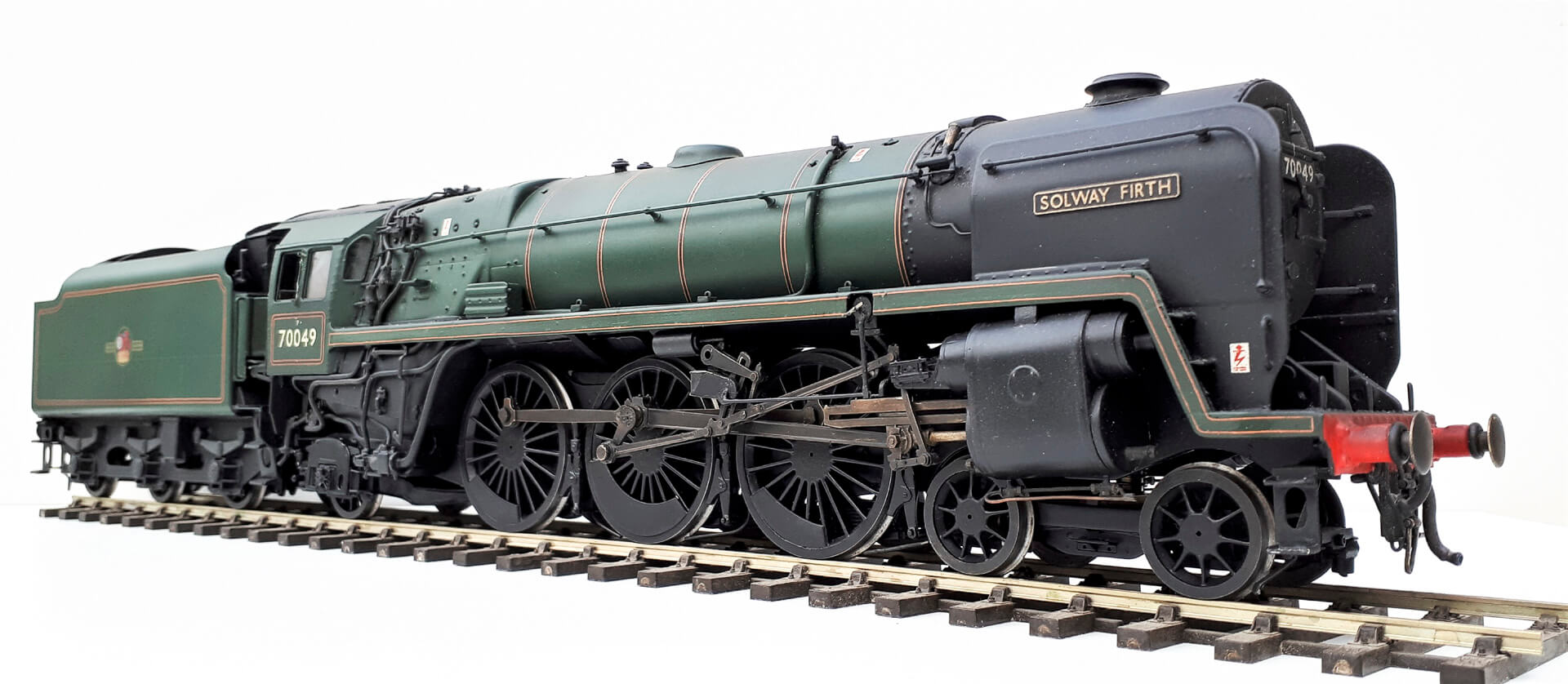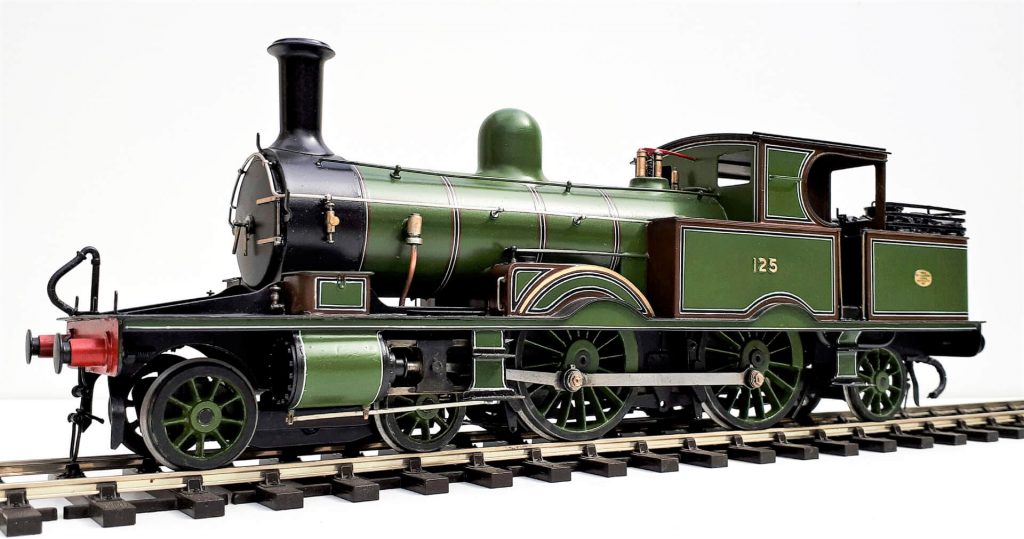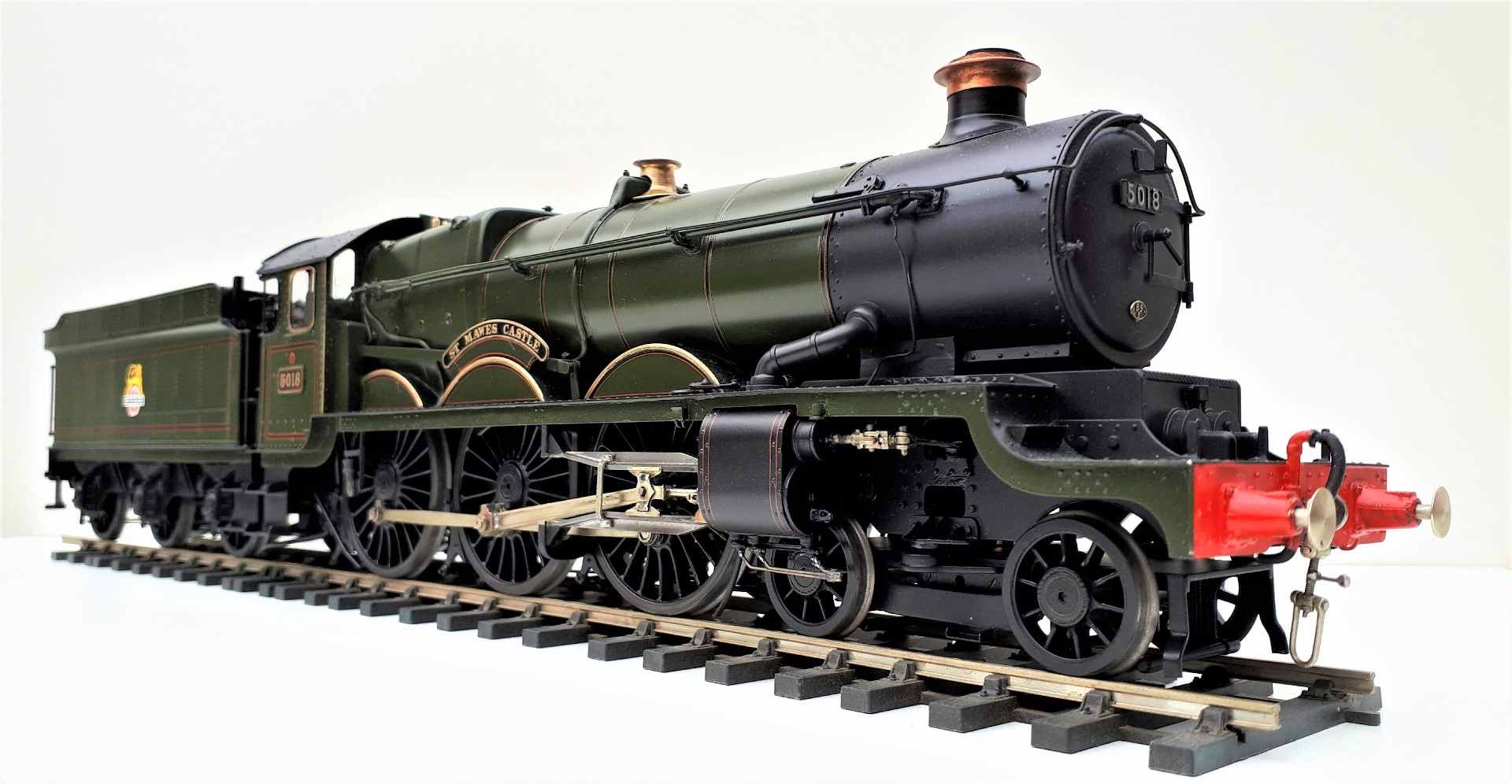
BR Britannia Class no. 70049 Solway Firth

















A top quality model, with fully working inside motion and opening smokebox door with internal smokebox detail. Built to finescale standards by Nick Dunhill, making use of the Martin Finney kit. Furthermore, the project was used as a test bed for 3D printing technology and its possible applications in O gauge.
Numerous changes have been made to the standard kit build: including making the spacing of the main frames above and below footplate level a slightly compromised, but consistent 29mm. Making prototypical frame stretchers to suit the new frame spacing. The fabrication of new smokebox front and backs. A new more prototypical ashpan has been designed and fabricated. A representation of the firebox front has been incorporated into the chassis. Loco and tender brake gear has been modified to give a more prototypical appearance. Side control and downward springing to minimise movement has been incorporated into the mostly scratch built bogie.
Additional detail to the inside of the cab: includes the the fitting of damper and cylinder draincock levers to the cab floor. The use of perspex rod for the water level indicator safety glass. Displacement lubricators are added to the cabsides. Finally and most noteworthy, wood veneer has been used for the cab floor.
Additional detail below the running plate: including injector, vacuum and lubricator pipes between the frames. Reversing steam rams and cylinder blocks with drain cocks, pipes and linkages are modelled to give an improved prototypical appearance.
Current pick-ups: are by phospher bronze wipers fitted to the tender inner chassis.
Number and worksplates: are by Diane Carney.
The loco crew: expertly hand painted by Mike Sheardown.
Superb loco and tender paintwork: with hand painted crests and lining is by Warren Haywood to give a fabulously smooth finish.
In conclusion, for a more detailed report on the building of this Greyhound refer to the Gauge O Guild Gazette Volume 19 no. 12, of August 2016 pages 65 and 66.


In conclusion, I tried to sell the unused driving and tender wheels at a Guild bring and buy recently……nobody wanted them. Consequently I took good photos of them and put them up for sale on ebay. Fortunately for me a very kind man put me straight as to their origins. I compared with photos in the book of the great man and immediately withdrew them from sale and have kept them, still unused. They are no doubt the work of James Stanley Beeson. How much more of this loco is Beeson we will probably never know.